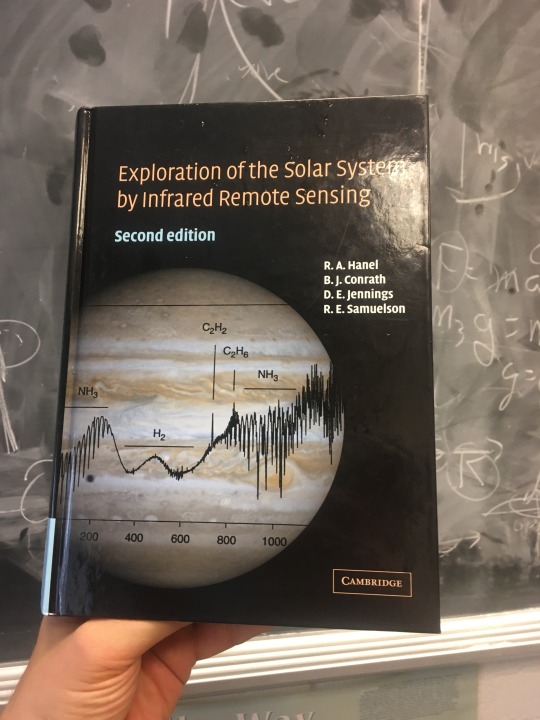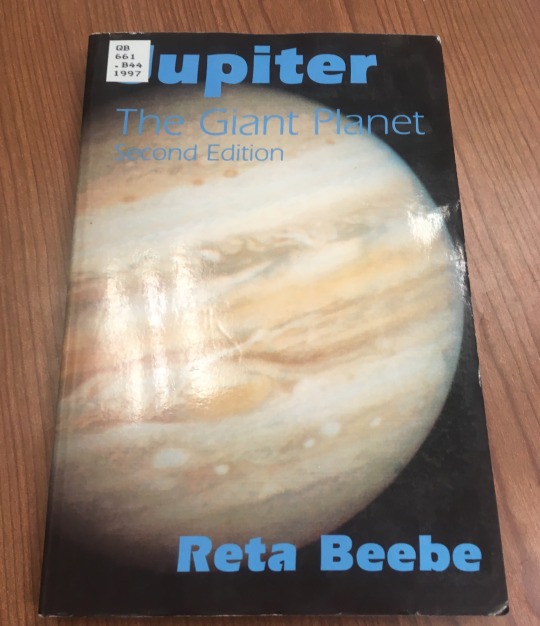A little web diary to post each day on my astronomy research. I am an associate professor at the University of Delaware.
Don't wanna be here? Send us removal request.
Photo

Looking at LSST cadence simulations. This shows how far out we could measure the parallax of an L7 brown dwarf to 10%.
0 notes
Photo

Some fun with Gaia and Pan-STARRS 1... stars in red will not be saturated in a 30s LSST exposure, purple in a 5s, orange in 1s.
0 notes
Photo

A color-magnitude diagram for brown dwarfs. This choice of color (J from the ground, W2 from WISE satellite) gives a clean diagram. You can see here how dramatic the L/T transition is! WISE0855, the coolest known brown dwarf, is in the bottom right. The plotted data is from a huge number of astronomers, compiled in the Ultracool Sheet on Google:
“This work has benefitted from The UltracoolSheet, maintained by Will Best, Trent Dupuy, Michael Liu, Rob Siverd, and Zhoujian Zhang, and developed from compilations by Dupuy & Liu (2012, ApJS, 201, 19), Dupuy & Kraus (2013, Science, 341, 1492), Liu et al. (2016, ApJ, 833, 96), Best et al. (2018, ApJS, 234, 1), and Best et al. (2020b, AJ, in press).”
0 notes
Text
Cadence Diplomacy
News on the Rubin Observatory LSST: Today we (the Science Collaboration Chairs) had a meeting with the new Survey Cadence Optimization Committee (SCOC). The next step will be a workshop in early December; over the next year SCOC will develop recommendations for the survey strategy or cadence. The big picture, I think, is that none of the four main science goals will be sacrificed: For example, a proposal to increase the supernovae yield by 50% that dropped the asteroid yield by 50% would likely be unacceptable. Anyway, first they will make the big decisions (rolling cadence or not, sky coverage, etc.) then later continue to work to optimize the details.
I also worked on more brown dwarf models, but that’s for another post.
0 notes
Photo


Labor Day Weekend 2020 was spent on re-visiting standard brown dwarf models in MESA. You can see that the stars (such as 0.090 solar masses) achieve long-term hydrogen burning, with a constant central temperature and luminosity. The brown dwarf models reach a peak and cool. The early evolution at around one million years is flat in luminosity for a little while as the deuterium burns. The 0.011 model doesn’t even fuse deuterium.
Next up, trying to get lower mass (”planetary”) models to work. There have been enough changes that the inlists for the MESA2 instrument paper where they make planets outright fail.
0 notes
Link
0 notes
Text
Visitors!
It was a really interesting research day, as a large group of “massive star” researchers were visiting Profs. Petit and Owocki, and a small group of Philadelphia-area Vera C. Rubin Observatory LSST experts were visiting Prof. Bianco. Class and other obligations kept me away for more time than I would have liked, but we had a discussion of LSST and stars,. Sadly, the ~16th magnitude saturation limit (or is it 17?) limits the direct connection to LSST. They’re cleaning up with TESS though!
Gordon Richards and Weixiang Yu of Drexel stepped us (the LSST folks) through a great system they built for looking at the huge number of LSST observing strategy simulations. It’s a pain to get the LSST MAF framework installed and the databases are over 60GB. So, they put them all on sciserver.org! You can run Jupyter notebooks (or terminal command lines) over there and not have to deal with local installations. It’s the future, though as one who used VAX computers in undergrad and grad school, it’s also the past! Anyway, once the wrinkles are ironed out, they will share the system more broadly and I hope it will be helpful to SMWLV and other collaborations.
0 notes
Text
In journal club, we discussed a recent paper that used random forest trees to fit the Tempe there and gravity of brown dwarfs with a grid of models.
0 notes
Text

I got this book from the library and I liked its discussion of radiative transfer. Or maybe just reading so many different books on the same thing means I have finally learned something.
0 notes
Text
LSST hackathon
Today is Day 3 of the joint TVS-SMWLV LSST workshop and hackathon, held here at University of Delaware using support from the LSST Corporation. The first two days were mainly talks, and now a lot is getting done....
TVS= Transients and Variable Stars
SMWLV = Stars, Milky Way and Local Volume
https://lsst-tvssc.github.io/TVS-SMWLV2019/
0 notes
Text
AAS submission day
I submitted an abstract for the January 2020 AAS meeting on our HST/K2 Uranus observations.
The undergraduate students are all making progress.
My new copy of Principles of Planetary Climate arrived today. I spent the day thinking about brown dwarf atmospheres... looking through the new book, Mihalas’s classic Stellar Atmospheres, and some other sources. It’s nice to be able to sketch diagrams on my iPad Pro knowing that I can find them again someday. (Unlike paper, which I inevitably lose.)
We had an interesting seminar on how convection in massive stars (the cores, that is) can be related to the observed magnetic fields.
0 notes
Text

This book is post-Galileo probe but pre-Galileo imagery. I really like it as an overview of the key gas giant planet.
0 notes
Text
Model atmospheres
I really enjoyed closely reading the new preprint on brown dwarf retrieval with a new open source package. They apply it to some standard brown dwarfs but also the new Sonora models. One interesting result is that because they use a different model of how much the K atomic line is broadened, they can have some large discrepancies with the Sonora models in the Y band region. Mark Marley pointed out another issue on Twitter: only the Sonora models correctly model “rain out” chemistry; the retrieval model’s chemistry is therefore off.
This also led me to start re-reading Marley and Robinson’s ARAA review article on modeling atmospheres. It’s very good! Then I ordered a book on modeling planetary climates... it’s supposed to be good but where will I find the time? Maybe on sabbatical?
0 notes
Text
Talking IMF, and brown dwarf planets
I asked Kevin Luhman for young IMFs and he recommended sources for Taurus and IC348. I read some nice papers on Upper Sco from his group too.
There was a nice preprint today comparing free floating Upper Sco brown dwarfs to the companions. Wouldn’t it be great to see signatures of differing formation processes?
I also read the recent paper that takes a Jupiter / Galilean moon formation model and applies it to very-low-mass stars and brown dwarfs. It predicts that for 0.05 solar masses the maximum planet mass is just 0.1 earth masses! I chatted about it with Sally but I need to learn more to understand how robust this kind of prediction is.
0 notes
Text
Last Friday of the regular season
I noticed today that this blog says I’m an associate professor... sadly I have no idea how to update it. Well, it’s not as if I actually post daily.
Jinbaio Ji showed me a detailed outline of his new paper. I worked a bit on the upcoming LSST TVS-SMWLV joint Hackathon. Sally told me about some interesting research ideas -- but she’s finishing her book.
Did I mention I’m thinking of writing a book?
Finally, we had a very interesting seminar today by Michael Daniel... you can use the huge VERITAS telescopes for OPTICAL interferometry, even though they have terrible imaging resolution. Very surprising, but it’s partially because you can beat the scintillation with a large dish and rapid exposures. One neat application is measuring the diffraction pattern when an asteroid occults a star. That tells you the size of the star. Anyway, CTA will be awesome at the interferometry because you have many more dishes, aka sampling the u-v plane with many baselines.
0 notes
Text
More fun with Mesa
This is a 0.050 solar mass brown dwarf with an effective temperature of 600K and log g = 4.75 from MESA. The circles show the pre-computed boundary conditions in the deep atmosphere (tau=100) which I believe are from the COND (Allard et al.) models for 600K and log g = 5.0 and 4.5. The interior model runs between them as you’d expect for an interpolation. I’ve also plotted two atmosphere models from the Sonora 2018 family; these are also 600K.Here it’s the log g = 5.0 model that seems to line up perfectly with the interior model. So there’s a slight offset, but with different physics and newer opacities I don’t think that’s surprising. A wise astronomer would read the papers to understand this better; I’ve posted this and will read later.


0 notes
